Search
Did you mean: Midas?
Summary 
Loading AI-generated summary based on World History Encyclopedia articles ...
Search Results
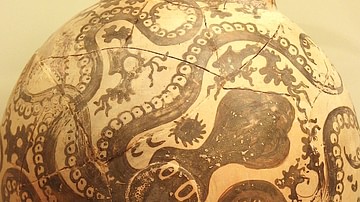
Definition
Minoan Art
The art of the Minoan civilization of Bronze Age Crete (2000-1500 BCE) displays a love of animal, sea, and plant life, which was used to decorate frescoes and pottery and also inspired forms in jewellery, stone vessels, and sculpture. Minoan...
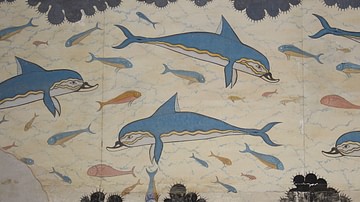
Definition
Minoan Civilization
The Minoan civilization flourished in the Middle Bronze Age (c. 2000 - c. 1450 BCE) on the island of Crete located in the eastern Mediterranean. With their unique art and architecture, and the spread of their ideas through contact with other...
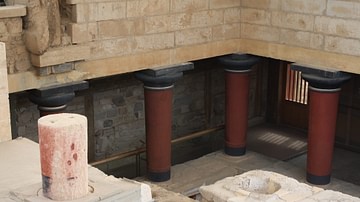
Definition
Minoan Architecture
The unique contribution of the Minoan civilization to European architecture is possibly most evident in the great palace structures of the major Minoan centres of Knossos, Phaistos, Malia and Zakros. Perhaps influenced by Egypt and the Near...
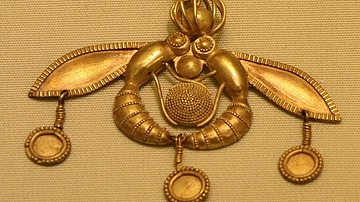
Article
Minoan Jewellery
The jewellery of the Minoan civilization based on Bronze Age Crete demonstrates, as with other Minoan visual art forms, not only a sophisticated technological knowledge (in this case of metalwork) and an ingenuity of design but also a joy...
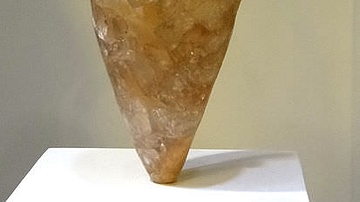
Article
Minoan Stoneware
Craftsmen of the Minoan civilization centred on the island of Crete produced stone vessels from the early Bronze Age (c. 2500 BCE) using a wide variety of stone types which were laboriously carved out to create vessels of all shapes, sizes...

Article
Minoan Frescoes
Frescoes are the source of some of the most striking imagery handed down to us from the Minoan civilization of Bronze Age Crete (2000-1500 BCE). Further, without written records, they are often the only source, along with decorated pottery...
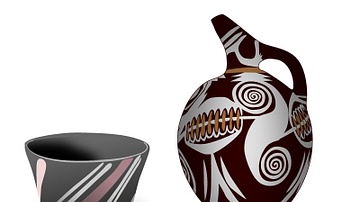
Article
Minoan Pottery
The ever evolving pottery from the Minoan civilization of Bronze Age Crete (2000-1500 BCE) demonstrates, perhaps better than any other medium, not only the Minoan joy in animal, sea and plant life but also their delight in flowing, naturalistic...
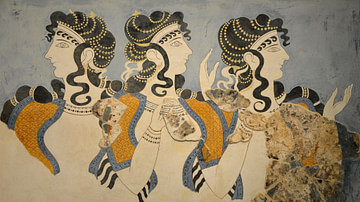
Article
Beauty in the Bronze Age - Minoan & Mycenaean Fashion
Dress and appearance in Bronze Age Greece (c. 3100 BCE - c. 1100 BCE) played a part in defining gender roles and emphasising idealized beauty that planted the seed for modern-day standards. The Minoans turned the island of Crete into a Mediterranean...
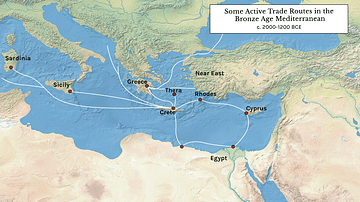
Article
The Minoans & Mycenaeans: Comparison of Two Bronze Age Civilisations
The Bronze Age Aegean in the eastern Mediterranean encompassed several powerful entities: the Minoans on Crete; the Mycenaeans on mainland Greece, and the Cypriots on Cyprus. These cultures are often examined separately, and thus the ample...
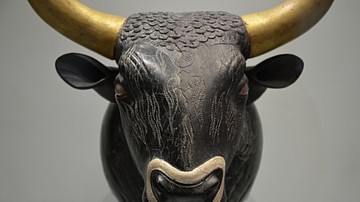
Article
Exploring Western Crete's Archaeological Treasures
As the cradle of European civilization and a meeting place of diverse cultures, Crete is a magical island that stands apart in the heart of the Mediterranean sea. Its prominent place in world history dates back to the mysterious and fascinating...